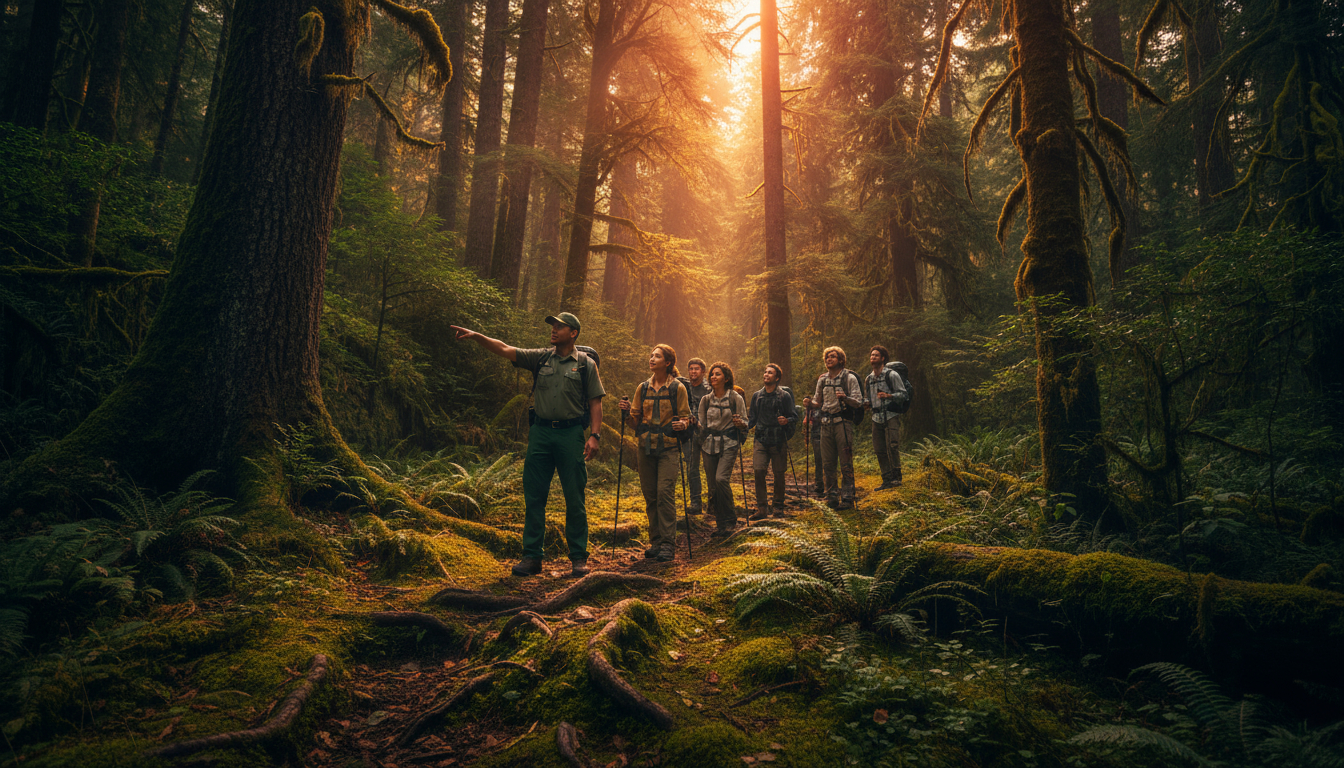The call of the wild is universal, but the means of answering that call—a challenging multi-day trek or a gentle interpretive stroll—vary dramatically among travelers. Guided hiking and nature walks for all levels offer the perfect solution, providing safe, structured, and informative access to the natural world, regardless of one’s experience, fitness, or geographical knowledge. From the novice looking for a gentle introduction to the expert seeking a remote, technical path with a knowledgeable local, guided tours transform a simple walk into an immersive educational experience.
Choosing the right type of guided walk is essential for ensuring enjoyment and safety. This comprehensive guide breaks down the different categories of guided nature experiences, detailing the benefits and what to look for when booking a tour, making the wilderness accessible to everyone. We explore everything from slow, mindful walks focused on botany to strenuous, multi-day guided traverses, ensuring every traveler finds their ideal path.
Phase 1: Understanding the Types of Guided Nature Experiences
The term “guided walk” encompasses a vast range of activities. Knowing the distinction is the first step in finding the perfect match for your needs in guided hiking and nature walks for all levels.
1. The Interpretive Nature Walk (Easy Level)
- Focus: Education, mindfulness, and sensory experience.
- Length/Difficulty: Short (1–3 miles), flat, well-maintained trails. Suitable for all ages, including those with limited mobility.
- Benefit: The guide’s primary role is to interpret the environment. They point out local flora, fauna, geological history, and ecological relationships that the casual observer would miss. This is ideal for urban dwellers seeking a gentle decompression.
2. The Day Hike (Moderate to Difficult Level)
- Focus: Physical challenge, scenic views, and trail navigation.
- Length/Difficulty: 5–15 miles, includes significant elevation gain. Requires moderate fitness.
- Benefit: A guide manages the logistics (permit acquisition, route finding, pace setting) and, crucially, carries emergency equipment. For the moderately fit, this allows focus solely on the physical enjoyment and the vista. Many services offer specialized day hikes, such as photographic tours or bird-watching excursions.
3. The Multi-Day Trek/Expedition (Expert Level)
- Focus: Immersion, endurance, and remote access.
- Length/Difficulty: Multiple days, often with off-trail sections, high altitude, or challenging weather. Requires high fitness and preparation.
- Benefit: In remote areas (e.g., Patagonia, the Himalayas, or the Arctic), a guide is a safety necessity. They manage food drops, camp setup, water purification, and emergency satellite communication. The guide transforms a risky undertaking into a manageable, structured adventure. These are the peak experiences of guided hiking and nature walks for all levels.
Phase 2: Choosing Your Guide and Tour Operator
The guide is the single most important factor in the success of your excursion.
4. Qualifications and Local Knowledge
Always choose a guide who is locally certified and possesses deep, specific knowledge of the area.
- Certifications: Look for official national certifications (e.g., Wilderness First Responder, National Park Service guiding permits, UIMLA/IFMGA certification for alpine areas).
- Specialization: If you want to see specific wildlife, hire a guide who specializes in zoology. If you are interested in geology, hire a geology-focused guide. A specialist will turn a great view into a profound lesson.
5. Safety Protocols and Group Size
- Safety First: Inquire about their emergency plan, first-aid kit, and communication equipment (satellite phone, GPS). A responsible operator will be transparent about their risk management strategy.
- Group Size: Smaller groups (typically 6-12 participants) offer a better educational experience and minimize environmental impact. Large groups can stress local wildlife and make it difficult to hear the guide, negatively affecting the quality of guided hiking and nature walks for all levels.
Phase 3: Preparation for the Trail
Even on a guided tour, personal preparation is crucial.
6. Gear and Layering
A guide service will usually provide a gear list. Adhere to it strictly. The layering principle is key, even for short walks:
- Base Layer: Moisture-wicking shirt (synthetic or merino wool).
- Mid-Layer: Insulating fleece or light down jacket.
- Shell Layer: Waterproof, windproof jacket.
- Footwear: Wear broken-in, sturdy hiking boots with appropriate socks. Blisters are the number one ailment on the trail.
7. Mental and Physical Assessment
Be honest with your guide and yourself about your fitness level and any medical conditions. A good guide will adjust the pace for the slowest member, but the traveler must disclose any issues (e.g., knee problems, fear of heights, asthma) beforehand. This ensures that the chosen route falls within the appropriate category of guided hiking and nature walks for all levels.
By leveraging the expertise of a local guide, travelers gain access to areas, knowledge, and safety levels that would be impossible to achieve alone. This structure democratizes the natural world, allowing everyone, from the first-timer to the seasoned veteran, to find their perfect trail and experience the profound benefits of connecting with nature.


